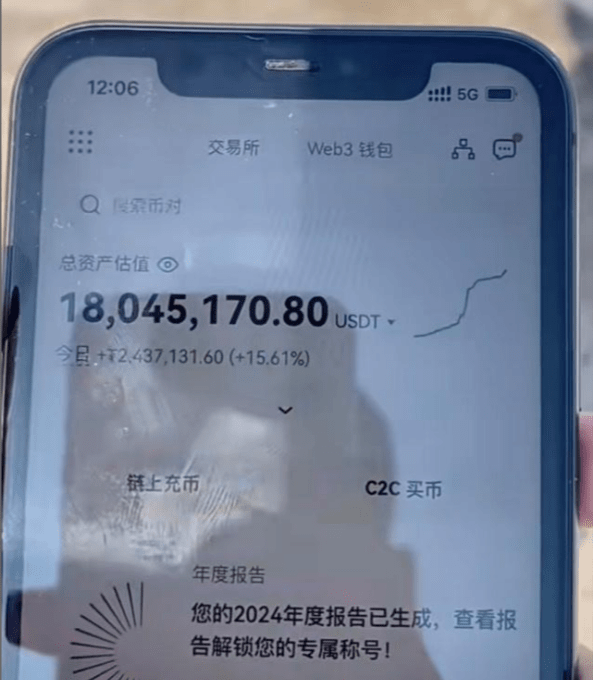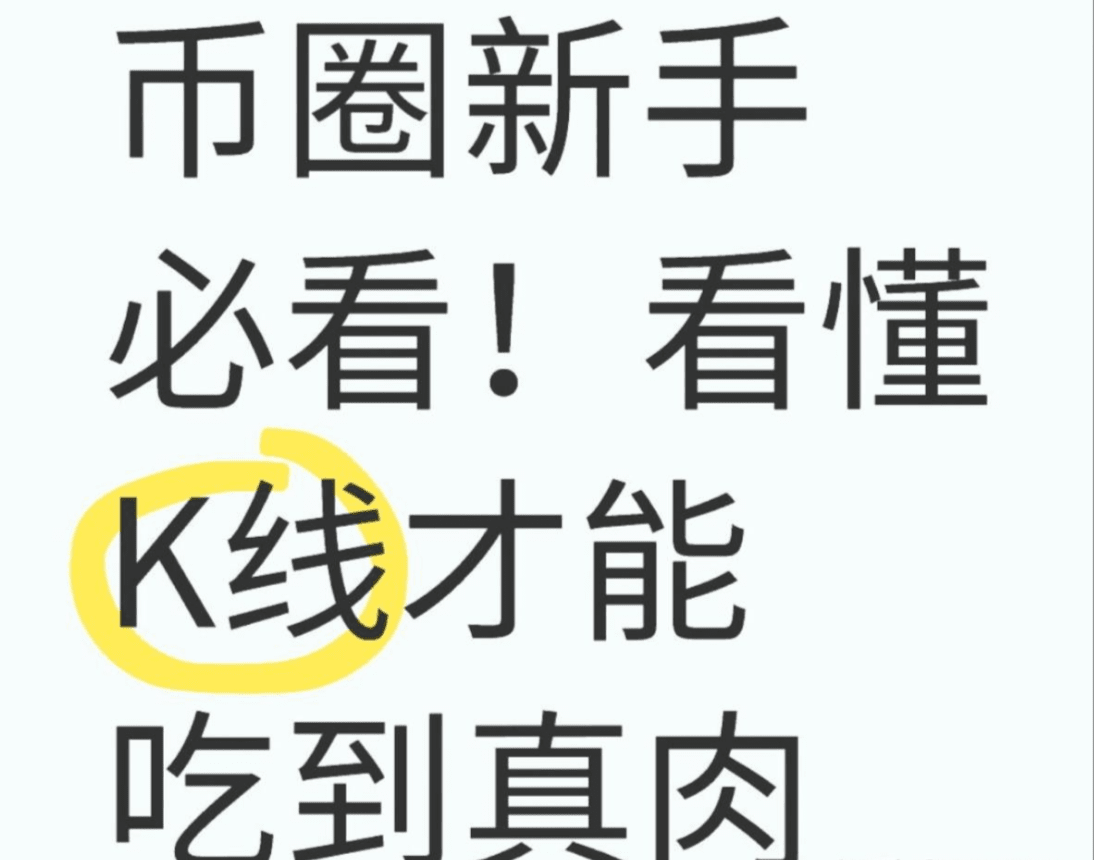I once thought I was the fearless captain in the sea of coins until that '312 Black Swan' sunk me. A position of 12 million was wiped out in half an hour, and the cold touch of the phone screen is still unforgettable.
But despair is often the catalyst for wisdom; suddenly realizing: the essence of contracts is probability games. With the remaining 800,000 principal, combined with the 'Dynamic Hedge Model', in February this year, I achieved an asset leap to 2.18 million in 60 days, with an increase of 272,900%!
Now, I will share this 'Storm Navigation System' for free—learning to dance with risk in the crypto space is the true way to survive.
In the crypto space, true experts are not necessarily those with advanced skills; I strictly adhere to market laws:

Practical dry goods in the crypto space! Understand K-lines, and even beginners can accurately enter.
After years of struggling in the crypto space and stepping into countless pits, I have come to understand: to truly reap benefits, K-line analysis is an essential skill! Today, I share my practical experience without reservation; I suggest you like and bookmark it for easy reference.
1. Trend is King! Instantly see the market direction.
Upward trend: Continuous appearance of multiple green candles with closing prices constantly hitting new highs indicates strong bullish momentum, increasing the probability of going long.
Downward trend: Continuous appearance of multiple red candles with closing prices consistently lowering; at this time, shorting is the wise choice.
Reversal signals: Hammer line, inverted hammer line, morning star, engulfing pattern… These classic K-lines, once they appear, often serve as 'traffic lights' for trend reversals; seizing them is the opportunity.
2. Identify key levels; do not enter confused.
Support level: the 'lifeline' where price rebounds after multiple declines. When the price approaches the support level, combined with hammer lines and other bullish patterns, decisively buy at the bottom! Resistance level: the 'ceiling' where price retraces after multiple rises. If a hanging man pattern or other bearish patterns appear, immediately short and exit.
3. Look at both volume and price to discern the true intent of the market.
Volume increase on rise: Price rises, trading volume synchronously expands → Buying pressure surges, strong buy signal.
Volume increase on decline: Price falls, trading volume surges → Selling pressure is crazy, decisively short to hedge.
4. Classic K-line patterns, accurately locking in buy and sell points.
Pattern Characteristics Operation
Hammer line: Bottom of a decline, with a long lower shadow (≥2 times the body); go long at the bottom.
Inverted Hammer: The shadow is above, resembling an inverted 'hammer'; reverse to go long.
Three White Soldiers: Three consecutive green candles, with closing prices hitting new highs each time; chase to go long.
Bullish engulfing: A long red candle followed by a small green candle (completely engulfing); a bottom in decline, go long.
5. Indicator Resonance, double the win rate.
Moving Average Golden Cross: 5-day moving average crosses above 10-day moving average → Trend strengthens, enter to go long.
MACD golden cross: Short cycle crosses above long cycle line → Bullish explosion, follow to profit.
6. Life-saving Rule: If risk control is not done well, all profits are in vain.
Always set a stop loss: Set a stop loss point when entering (usually outside support/resistance levels) to avoid a crash.
Position management: No single trade should exceed 10% of total capital. Diversify investments; surviving allows you to laugh last.
Final reminder: K-line analysis is not an all-powerful formula and should be flexibly judged in conjunction with news.

From liquidation to turnaround! 16 iron rules for trading cryptocurrencies to help you completely say goodbye to being a 'retail investor'.
1. Bull and Bear Strategy: Grab altcoins in a bull market, hold onto BTC in a bear market; this is the golden rule to survive cycles!
2. Volume Alert: A coin that suddenly increases in volume at the bottom is the 'start alarm' sent by the market; keep a close watch!
3. Moving Average Sniping: When an upward trend coin pulls back to a key moving average, act decisively; this is a golden opportunity given by heaven!
4. Trading Restraint: Don't be a 'trading maniac'! Catching a few big trends a year is enough; greed will lead to failure!
5. Position Red Line: Never go all in! Leave enough bullets to make a counterattack when the market changes suddenly.
6. Stop Loss Decision: Don't average down on junk coins! Cutting losses in time is a stop loss, and it is also a lifeline to protect your principal.
7. News Awareness: Just listen to gossip; following the crowd can get you buried in a pit in no time.
8. Focus on Your Track: Don't touch unfamiliar coins! Deeply engage in familiar tracks to accurately and effectively seize profits.
9. Emotion Management: Stay calm when the market is crazy, and remain composed during market panic; don't let emotions dictate your wallet!
10. The Truth About Altcoins: Altcoins that rise a lot must fall, but those that fall a lot may not rise; having an eye for coin selection is more important than luck!
11. Reverse Thinking: When everyone frantically enters the market, danger is quietly approaching; don't be the last fool to take over!
12. Wisdom of Staying Out: Learn to wait in cash! When market signals are unclear, cash is the safest asset.
13. Hotspot Avoidance: Don't chase fleeting hotspots! Blindly following the crowd will get you trapped!
14. System is King: Build a dedicated trading system and strictly follow it; this is the core secret to stable profits!
15. Mindset Victory: Investing is a marathon; stay calm and not impatient, only those who laugh last are the winners!
16. Capital Bottom Line: Don't use your lifesaving money to trade cryptocurrencies! Invest with spare money, and with a steady mindset, your win rate will naturally soar!

Profit comes from sticking with the trend when others give up, seizing opportunities that others overlook, and doing what others dare not do. In investing, there is only insufficient persistence in giving up, not a complete failure. Trading is the same; you may be optimistic about a direction initially, but as the market fluctuates, you may change your original direction and exit your short position to go long due to a slight rise, ultimately delaying the downward trend and causing losses against the trend. Such examples abound in trading; any success requires persistence.
Becoming a trader with a strong defensive awareness is a key transformation in a novice trader's journey. Many beginners may initially be misled by a desire for quick success, hoping to earn profits quickly and even trading with an 'overnight wealth' mentality. However, a more practical and feasible mindset should be: maximize protection of one's capital. These two mindsets cannot coexist; if you only focus on rapid profits, you are likely to lose capital even faster.
A rule from the sports arena also applies to trading: offense is the best defense. In this context, it means trading only under favorable conditions and protecting capital at other times, staying away from the market. Beginners may achieve success by luck in their initial trades, but luck cannot last; you should beware of the 'beginner's effect' trap.
Imagine if you held a gun; unless you are absolutely certain you can hit your target accurately, you wouldn't waste bullets lightly. The same principle applies to trading: preserve capital strength, and only strike with a 'fatal blow' when truly favorable opportunities arise. In trading, maximizing capital protection is the key to success. As long as you can effectively control risk, even if you encounter strong entry signals but eventually fail, the impact on capital will be kept within reasonable limits.
Frequently checking charts and constantly monitoring trades often has adverse effects on trading. In life, too much interference usually does not yield good results. If you keep trying to excessively control your trades, the result may be counterproductive and cause you more trouble.
Have you ever unconsciously increased your position or exited a trade early due to excessive focus on charts? In retrospect, did you feel you were too impulsive at that moment? Such unplanned behavior is often one of the reasons many people incur losses.
The simplest way is to set up a trading plan and then forget it. This is a principle I often emphasize to beginners and one of the most valuable experiences I've gained: the less you interfere with your operations in trading, the better. Simply follow your trading plan and let trades proceed as planned; that is true trading wisdom.
The result of the last trade should not affect the next trade. The result of one trade should not influence the next trade. This is a crucial principle, but many people often forget it. They are easily swayed by the results of the last trade. However, it is important to understand that each trade is unique.
The results are randomly distributed. Suppose you made 100 trades, the profit and loss might be negligible. However, their distribution cannot be so uniform. It is possible that 5 or 10 consecutive trades are losses, and if these losses affect your mindset, the subsequent profit opportunities may also be obstructed by your emotional state.
It is also important to note that after experiencing profitable trades, excessive confidence can have a negative impact on trading just like the fear that follows losing trades. Excessive confidence makes one more willing to take on too much risk, and in the long run, its negative impact can be quite severe. Therefore, maintaining calm in trading and not being swayed by short-term results is key to maintaining a stable mindset and achieving long-term success.
Simplify trading, and you will gain more.
Moderation is key in trading. Many traders often make the mistake of overdoing things. They overanalyze the market, overinterpret trends, overthink, and overtrade, generally doing many unnecessary things. As a trader, learning appropriate 'laziness' is equally important.
First, it is essential to make it clear that favorable signals in the market are limited, even rare, over a period of time. Most of what you see or hear may just be 'market noise' and is of no benefit to you. Learn to filter these signals and then screen out the truly favorable 'high-quality signals'; this is a routine step in finding opportunities.
Secondly, I suggest you learn the mindset of hedge fund traders for trading. They hold millions or even billions of dollars but trade very principled, only choosing the highest return opportunities as if picking diamonds from sand. For those 'possibly', 'seemingly' ambiguous signals, I advise you to stay away. In my over 20 years of trading experience, the best trades are always the most obvious and intuitive ones.
Have a clear exit plan before entering.
In trading, no one tells you what to do. You must create your own rules, which means you must take responsibility for your actions. Many lack this self-control, leading to frequent losses of trading direction.
One of the most important tasks before trading is to determine your exit plan. It took me several years to realize: exiting is more important than entering. It has been observed that many people's exits are done impulsively, resulting in either little profit or significant loss. Establishing a strict profit and loss plan is the best approach. Such a plan provides clear guidance, allowing you to stay calm and execute the plan regardless of profit or loss. This disciplined exit strategy helps ensure that you maintain a clear mind in trading and reduce the influence of impulse and emotion on decision-making.
Avoid unworthy trading.
In the trading world, unworthy trading refers to trades where risk and profit are disproportionate, usually occurring when traders trade blindly and frequently. Such trades often lead to losses greater than profits, affecting the trader's mindset and even trapping them in a vicious cycle of losses.
Specifically, it manifests as traders facing a volatile market, seeing so-called 'opportunities' and rushing to enter without considering the profits and risks of the trade. Such blind entries are often based on luck, believing that even a small profit is a gain. They overlook the big risks while focusing on small profits, and even consider any trend as an opportunity that cannot be missed, subjectively magnifying small opportunities and impulsively trading. This attitude not only shows contempt and disrespect for the market but also makes it difficult to achieve good results in the market.
For professional traders, they usually formulate a trading plan in advance, set stop losses, etc., to ensure that even if they incur losses, the impact is not too great. However, losses from unworthy trades are different, as these traders have a superficial understanding of the market, make casual trading decisions, and lack thoughtful consideration. Such avoidable losses are more detrimental than beneficial for a trader's growth.
High discipline
High discipline plays a critical role in trading within financial markets. It refers to traders following a set of clear rules and principles when trading to ensure effective risk management, achieve investment goals, and avoid adverse consequences from emotions and arbitrary decisions. The level of discipline directly relates to the success or failure of trading and is considered one of the key factors for successful trading.
I insist on not being disturbed by emotions in trading decisions. Every day I only spend half an hour checking charts, deliberately avoiding excessive observation.
Market volatility. I suggest traders strictly adhere to their trading plans.
Avoid excessive analysis of the market, as disciplined execution is the cornerstone of stable profits. By following the predetermined plan, I can remain calm, avoid emotional decisions, and thereby improve trading efficiency and stability.
Most of the time, you should stay away from the trading desk on the road to trading; a wise strategy is to keep a distance from the market. Overtrading is often a shortcut to losing capital; remembering this is crucial.
BNB GDCE TRX

